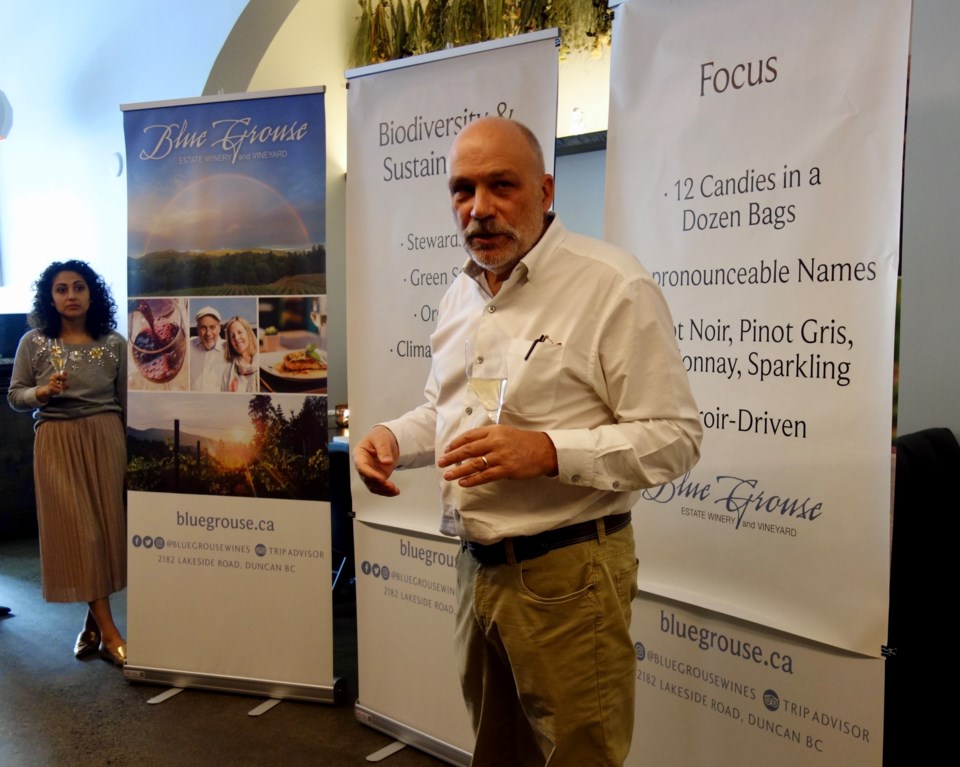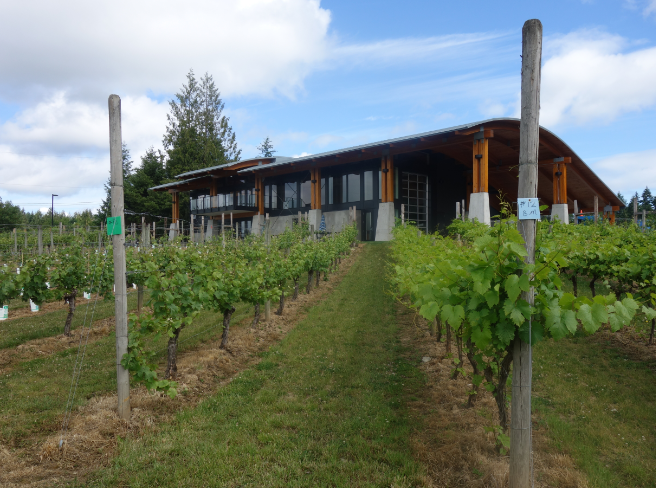Paul Brunner is a BC mining engineer whose tale of buying Blue Grouse Estate Winery on Vancouver Island is a courageous one that proves leadership, humility, humour, and perseverance can lead to success for the environment, wine lovers and eventually the winery.
Brunner confides, “There’s a whole bunch of things with my involvement with the winery that I call ‘dumb luck’. I really didn’t know very much. We weren’t really thinking in terms of where’s the best place in the world to build a winery,”
“We were looking for a second home, liked the idea of a winery, and I have family on Vancouver Island so there’s a connection there. I figured it would be a family thing; something to do with my time as I’m retired and owning a winery would be a simple business…one of my many misjudgments. And I thought it would be easy...another mistake.”

In 2012, Brunner decided to purchase Blue Grouse Estate Winery in the Cowichan Valley on Vancouver Island. Very quickly he learned the truth about owning a winery, which he calls the Rule of $5000. “Everything that breaks is $5000 or more.” His geothermal heating for the winery is an excellent example.
“A wonderful idea, not a lot of people can do it well. It’s a half million-dollar investment that’s now over a million dollars, six years down the road! So it’s not all easy,” laments Brunner.
Despite some hardships, Brunner and his team have tackled many ambitious improvements including modernizing the winery, tasting room, and vineyard infrastructure.
They’re also making a huge commitment to go environmentally ‘green’. Brunner reveals his sense of humour when he states, “I got out of the mining industry and I tell people I’m paying for my sins.”
“People talk about sustainability but we think of stewardship because we can’t guarantee that we will have the winery forever. But we can guarantee that we will leave it in better shape than we found it.”
For Brunner, stewardship incorporates better wines, vines, infrastructure, quality of his employee’s lives, and quality of his business model going from unprofitable to profitable.
He illustrates the unprofitable side of the wine business. “ The first thing you learn when you buy a winery is the 20-10-50 Rule and it’s very important. You make wine for $20, you sell it for $10, and you go to a restaurant and buy it for $50.” Ah the glory of owning a young winery!
As far as environmental stewardship goes, the design of the winery’s windows and the shape of the roof that resembles a grouse’s body is one of his many green innovations. Brunner explains, “The curvature of the roof allows the sunlight to enter the winery during the winter months and keeps the sunlight out in the summer months, which reduces your heating and cooling bills.”
Going green also means going organic which they began a year ago. “To be certified organic, it needs to be organic for three consecutive years, and then you have to maintain it. Fortunately Blue Grouse never used many pesticides and used mostly organic fertilizers. We compost all of the wastes and we’re using the compost on the grounds to improve the vineyards.”
So far we’ve established that Blue Grouse has evolved to be innovative and incorporate stewardship in running the winery. Next week we will illustrate how Blue Grouse has made stewardship a guiding principle in wine making and marketing.
Ehanson0705@gmail.com



